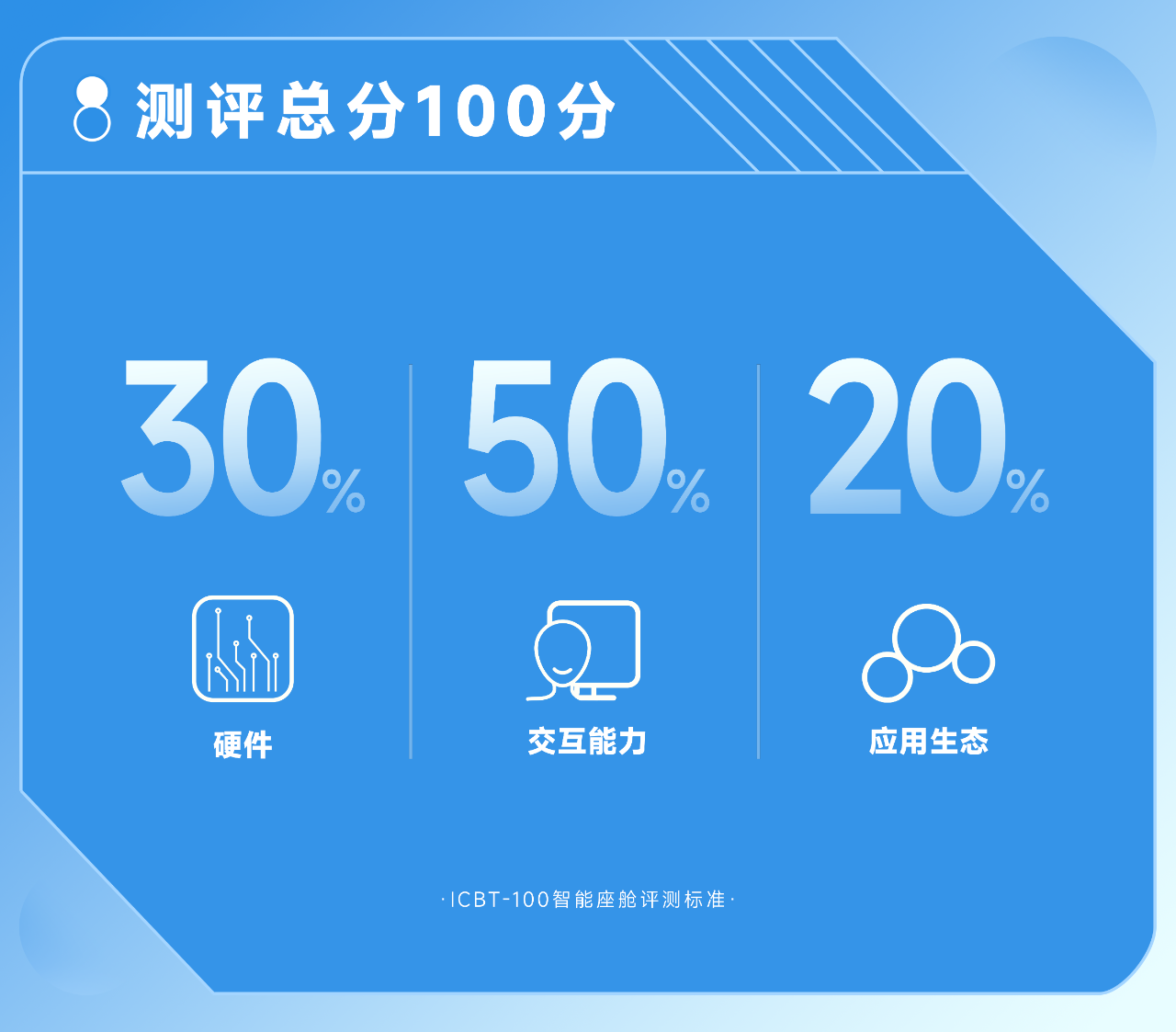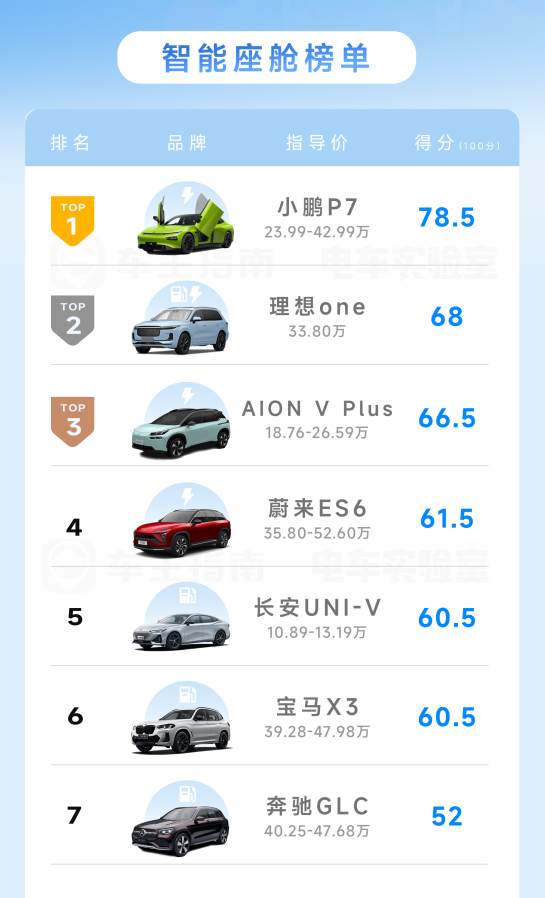Except for some lagging, everything else is really good.
By: Xiaojinshao
Since the release of various suffix models such as PLUS, MAX, and PRO for the iPhone, naming conventions across various industries seem to have been enchanted, and the automotive industry is no exception. This time, GAC Aion has added a “Plus” to its upgraded version of the AION V.
So, the question is, has the “Plus” of the AION V really met the needs of consumers? Don’t worry, this article will take you on a deep dive to explore the “Plus” experience of the AION V Plus in terms of intelligent cockpit.

At the front
Nowadays, intelligent cockpits have developed to a level where they no longer simply satisfy functional needs. Traditional passive interactions (initiated by humans) are moving towards active interactions (where machines can initiate based on user needs), and more natural and emotional features are quietly changing our driving habits.

To address this, we have introduced the “Smart + ICBT-100 Intelligent Cockpit Evaluation Standards,” which focuses on three main categories: intelligent hardware, interactive capability, and application ecology. Each category is further divided into data and experience dimensions, and is scored based on more than 30 projects. Let’s see how the intelligent car navigation we use on a daily basis fares.
Hardware
The layout of the GAC Aion AION V Plus intelligent cockpit continues the minimalist family concept, with a floating 15.6-inch center screen + 10.25-inch center console screen replacing the double-screen design of the previous generation, providing a more intuitive interactive experience.

In terms of screen performance, the AION V Plus 15.6-inch center screen uses a M156GWFA TFT-LCD screen from Longteng, with a resolution of 1920*1080. On actual testing, the PPI is 141 (RGB standard arrangement), and the display edges have more visible sawtooth patterns. The NTCS color gamut is 90.2%, and the color restoration is very good. In addition, the actual peak brightness of the screen reached the highest value among all tested models—at 924.7nit.
However, the actual performance of the AION V Plus central control screen is not up to the expected level in terms of anti-light ability and viewing angle due to the material of the outer screen coating, especially under strong light, the reflection is more serious, despite having excellent peak brightness. At the same time, the screen’s surface oil-repellent layer effect is average, and there is a considerable gap in fingerprint control ability compared to the previously tested BMW X3 and Mercedes-Benz GLC.

As for the basic hardware of the cockpit, it is well known that the AION V before the facelift was equipped with the Huawei HiSilicon Kirin 5000 5G chip, but after the facelift, due to changes in the supplier, the AION V Plus chip only consists of the Qualcomm 820A (released in 2018 / quad-core design), with an overall computation power of about 320GFLOPS (average level), and has eliminated the 5G network standard, only supporting 2/3/4G networks.

In addition, it is matched with a memory combination of 4G (running memory) + 64G (storage space).

Interaction Part
In the IT industry, there is a saying: “No matter how good the hardware is, without system optimization, it is also in vain.” This reflects the importance of the system. In the smart cockpit test, interactive ability occupies a large part. In this section, we have divided it into three dimensions: system, voice, and other.
Special Note: In order to more directly demonstrate the system logic, we have set up a logic challenge showdown, which is to let first-time users operate various functions in sequence within the specified time: matching mobile phone Bluetooth -> turning on Bluetooth music (start playing) -> making a call to 10086 (connection) -> adjusting the car screen brightness (adjusting to the brightest) -> navigation destination, to see who completes the task in the shortest time.
 The car system of AION V Plus is developed based on Android and ADiGO 4.0 vehicle system, with the interface adopting the most popular card-style layout in the current cockpit and a more functional overall style. The main page defaults to map information as the core (adjustable), and the left floating card-style layout supports three fixed modules of map search, multimedia music, and radio station, but unfortunately does not support custom arrangement and combination.
The car system of AION V Plus is developed based on Android and ADiGO 4.0 vehicle system, with the interface adopting the most popular card-style layout in the current cockpit and a more functional overall style. The main page defaults to map information as the core (adjustable), and the left floating card-style layout supports three fixed modules of map search, multimedia music, and radio station, but unfortunately does not support custom arrangement and combination.

In addition, there are fixed functional options at the bottom, including Home button, application menu, vehicle settings, main and co-pilot air conditioning temperature, and air conditioning wind direction, which greatly reduces the learning difficulty of AION V Plus with convenient card + fixed options and allows for very fast learning.
As for the menu hierarchy, the highest level of menu of AION V Plus is no more than four levels, but the process of entering the next level of menu may feel awkward due to the lack of transition animation. In addition, the system response speed of AION V Plus is visibly laggy, and the system frame dropping can be clearly felt during the normal home page menu sliding process. When inputting with the keyboard, the character popping response is somewhat frustrating. Due to various laggy responses, the actual logic test time is 1 minute 44 seconds and 73 milliseconds.

It is worth mentioning that AION V Plus not only has regular touch screen operations but also supports gesture control. It provides three default gesture recognition actions, including “previous song”, “next song”, “take a photo”. However, from the actual experience, the sensitivity is not as good as the last tested BMW X3. In addition, the front camera of the car has also added scenarized active interactive abilities, such as being able to turn on automatically when the central control screen is in off status and the driver gazes at the screen for 1 second.

Regarding the performance of the voice system, AION V Plus adopts the currently most popular iFLYTEK latest voice interaction system, supporting default wake-up words (“Hi Baby”) or custom wake-up words for wake-up, and is equipped with two independent microphones in the front row, ensuring recognition and noise resistance capabilities for the left and right driver seats.
 The AION V Plus not only perfectly fulfills basic functions such as voice navigation, temperature, windows, music, volume, and weather, but also has Cantonese dialect, continuous conversation (up to 90 seconds), natural dialogue, and context recognition. In terms of ability to recognize and correct errors, the AION V Plus also performs well.
The AION V Plus not only perfectly fulfills basic functions such as voice navigation, temperature, windows, music, volume, and weather, but also has Cantonese dialect, continuous conversation (up to 90 seconds), natural dialogue, and context recognition. In terms of ability to recognize and correct errors, the AION V Plus also performs well.
Thanks to the AION V Plus’ voice interaction system, touch interaction delays can be largely eased, and most basic needs during daily driving can be accomplished through voice, thereby improving driver focus.
The AION V Plus camera system consists of one monocular driving perception camera, five panoramic cameras, one medium- and long-range millimeter wave radar, and four millimeter wave radar, with transparent bottom plates, 3D views and other features supported. It has been tested to control distortions well, ensuring accurate vehicle identification of road information and front obstacles.
However, to achieve a truly intelligent cockpit, it is necessary not just to rely on the car’s own machine system but to also join a richer application ecosystem. After all, without a sufficiently diverse application ecosystem, the system itself has little value. This is similar to the currently hot IT industry.
The AION V Plus has maintained a high degree of openness, with built-in apps including KuGou Music, QQ Music, Kuwo Music, iQiyi, Tencent Video, Douyin, and support for application market expansion. It is worth noting that various multimedia software has not been specifically optimized for the AION V PLUS interface, but has directly copied the generic in-car design, thereby usability of various software needs improvement.
In terms of entertainment functions, its built-in Malice Car Game app can turn the phone into a gamepad and play classic games, and the app store also offers games such as Fruit Ninja, Fish Stacking Master, and Landlords.
Finally, the AION V Plus has a new design with a comfortable and stylish look, expressing a clear sense of technology and value.The overall score of 66.5 on the AION V Plus in this test exceeded expectations, not inferior to new competitors like NIO’s We Xiaoli and other rising stars at the top of the leaderboard, not to mention the mainstream models of traditional luxury brands like BBA. The numerous interactive and experiential innovative technologies have shown us the progress of domestic brands in the intelligent cockpit, especially the perfect system logic/response and intelligent voice which, despite the similar hardware environment, gives us a more comfortable feeling through AION’s software optimization. This is something that some domestic automakers can learn from.

At the same time, the defects of AION V Plus are also quite noticeable, such as system lag, dropped frames, simple transition animations, and some complicated operation procedures, all of which still have room for improvement. But overall, as a family car, AION V Plus’s performance has made me even more looking forward to more domestic models. I believe that in the near future, Chinese domestic cars will inevitably refresh our perception of intelligent performance.

Previous content: (Click below to view)
NIO ES6 / XPeng P7 / LI Xiang ONE: “We Xiaoli, who is the strongest intelligent cockpit? ICBT-100 test“
Changan UNI-V: “Is there any reason to buy a Civic? Changan UNI-V intelligent cockpit test“
Standard release: “Intelligent cockpit evaluation standard release by Electric Vehicle Laboratory | Digital Intelligence+ICBT-100“
This article is a translation by ChatGPT of a Chinese report from 42HOW. If you have any questions about it, please email bd@42how.com.
